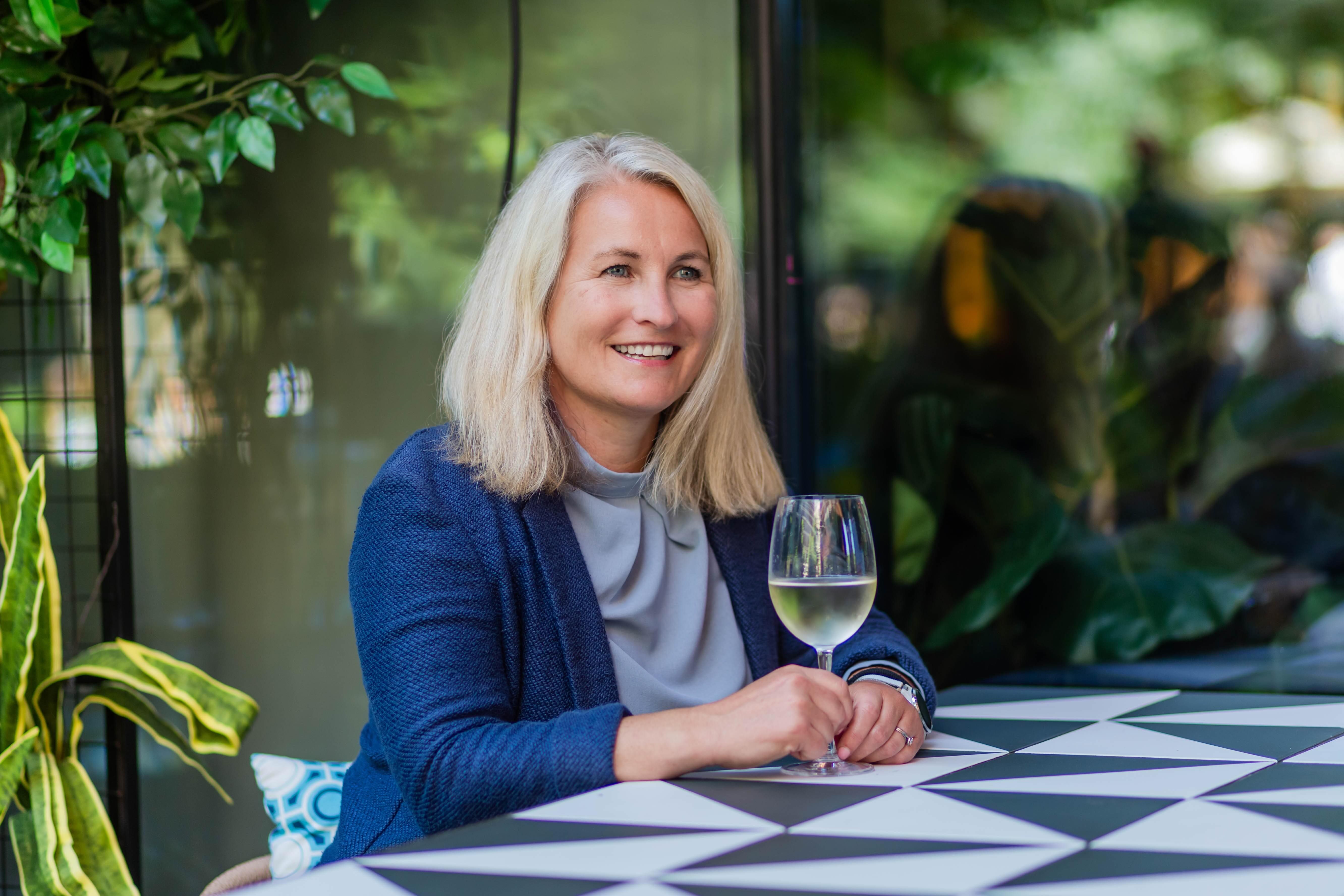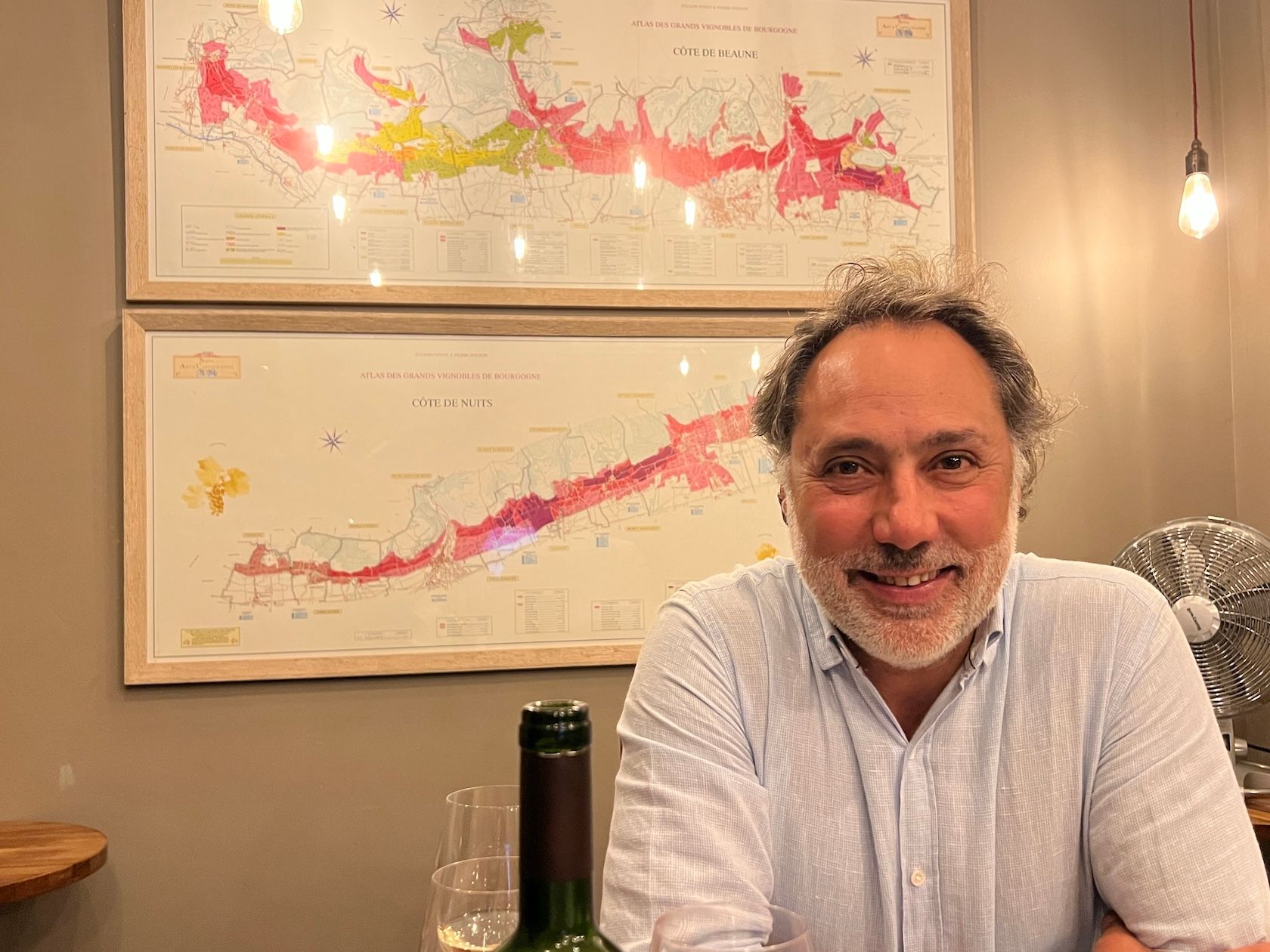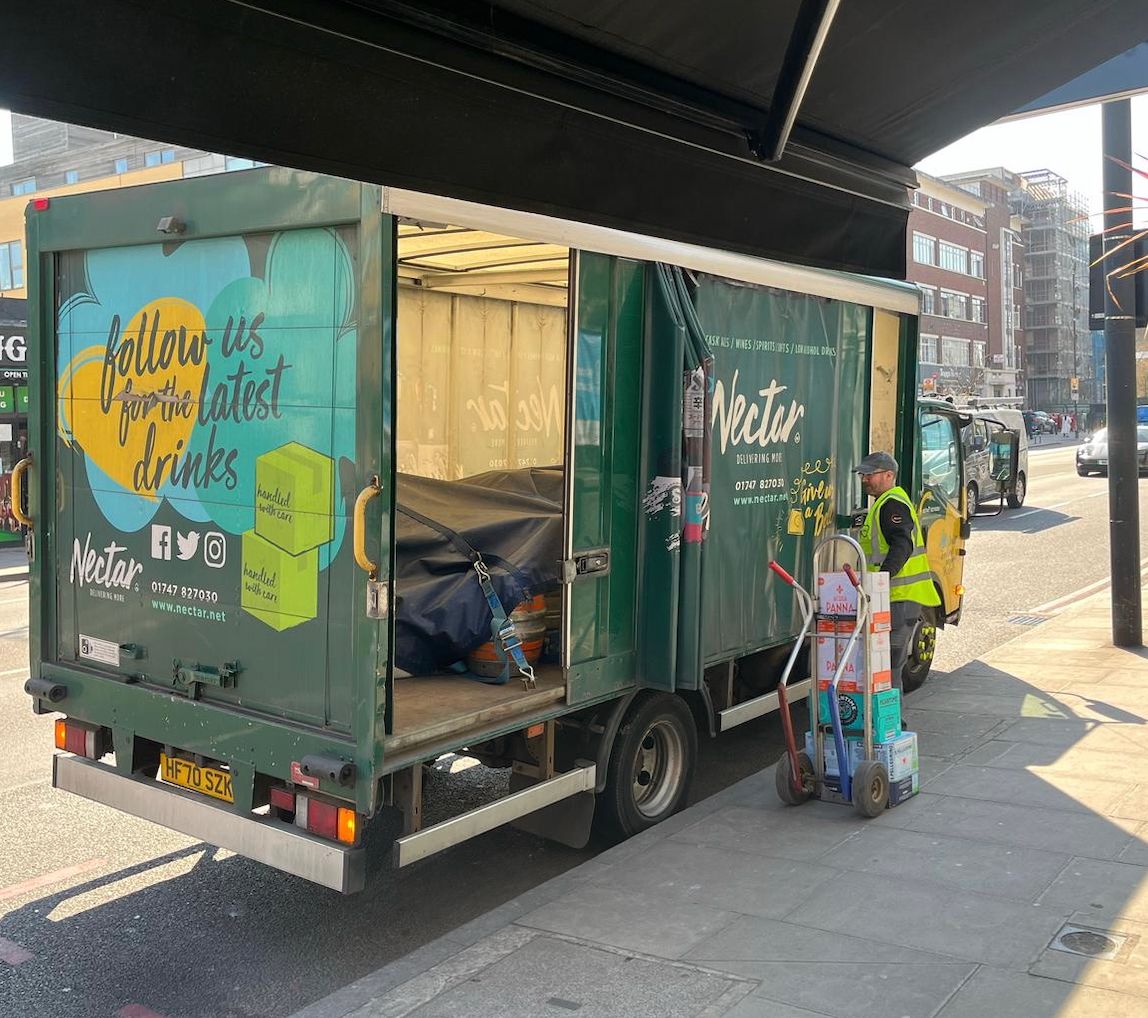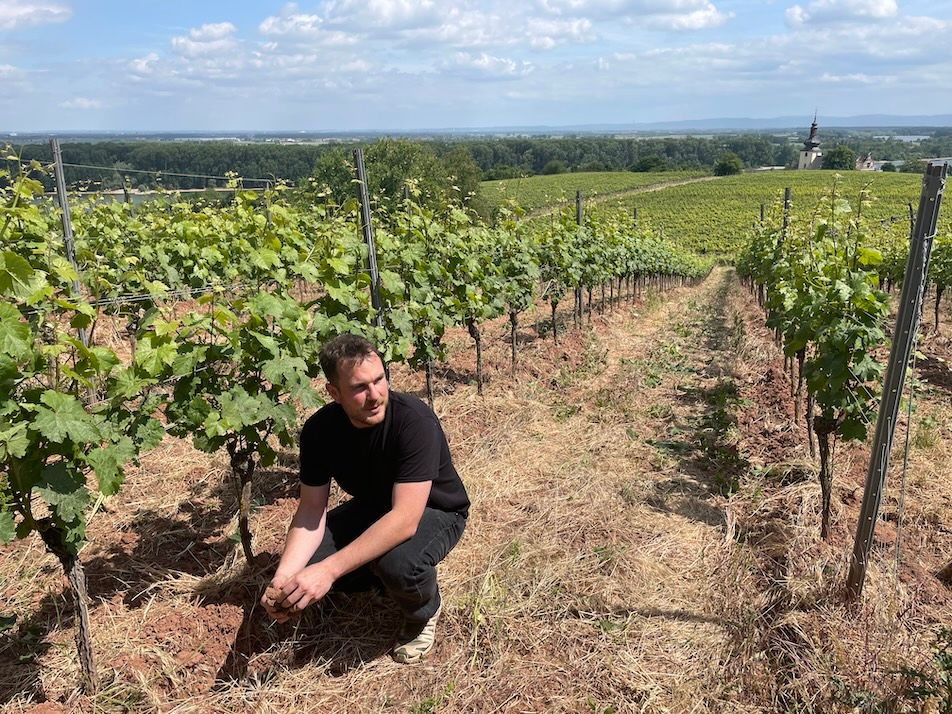Chemin de Moscou, Figure Libre and En Passant are just three of the brands that Domaine Gayda has been able to build in step with its own growth, expansion and customer base.
Within a minute of talking to Tim Ford you know this is a wine producer whose emphasis is very much on the “producer” side of that label. In the same way that a film producer is all about the business strategy needed to get a film made, distributed and on enough screens to turn a healthy profit, Ford’s rationale for being a wine producer is to make wines that an increasing number of customers will want to list and consumers will want to buy.
To do that means making wine in a way that allows you to build a brand strategy in keeping with the land you own, the grapes you make and the styles of wine you are able to produce. Ford’s vineyards and winery might be in the traditional heartland of French winemaking – the Languedoc Roussillon – but the business principles and objectives of Domaine Gayda are more in keeping with the wine brand builders of the New World.
Which, perhaps, should not come as a big surprise as there is a big South African influence behind the overall strategy of Domaine Gayda. Ford’s business partner, Anthony Record MBE, was born in Cape Town and has strong connections in the country, crucially having Mark Kent, owner of the Boekenhoutskloof Winery and responsible for creating global brands such as Chocolate Block and Porcupine Ridge, as a long term friend and adviser for the company from its outset in 2003.

Tim Ford and winemaker partner Vincent Chansault are 100% focused on making wines and brands they know their customers and the market needs
It was at Boekenhoutskloof that they met Vincent Chansault who they brought on as winemaker and has helped champion and finesse the blending expertise that is behind so many of Domaine Gayda’s wines. Ford also has its roots in Africa having spent some 20 years working in horticulture and running his own flower business there.
Ford says they have been been extremely lucky to have the branding expertise and knowhow of Mark Kent to go to ever since they first set up Domaine Gayda.“We have learnt so much from Mark over the years and I would like to think we are following in his footsteps to some degree.”
Long term process
Ford is also keen to stress that, yes, although it might now have a portfolio of brands that stretches across most major £10 plus price points, it has been a long, gradual, careful process to get to this point.
“People seem to think you can create a brand overnight,” says Ford. “But it is often the result of being able to produce an outstanding product over a long period of time, day in day out. That is how you build a brand.”
Again he turns to the experience of Mark Kent and whilst his Chocolate Block brand is so successful it is often sold on allocation around the word it has “taken him 22 years to build that brand”.
It ultimately all comes down to the quality of the wine in the bottle. Quality, matched by consistency of service, says Ford.
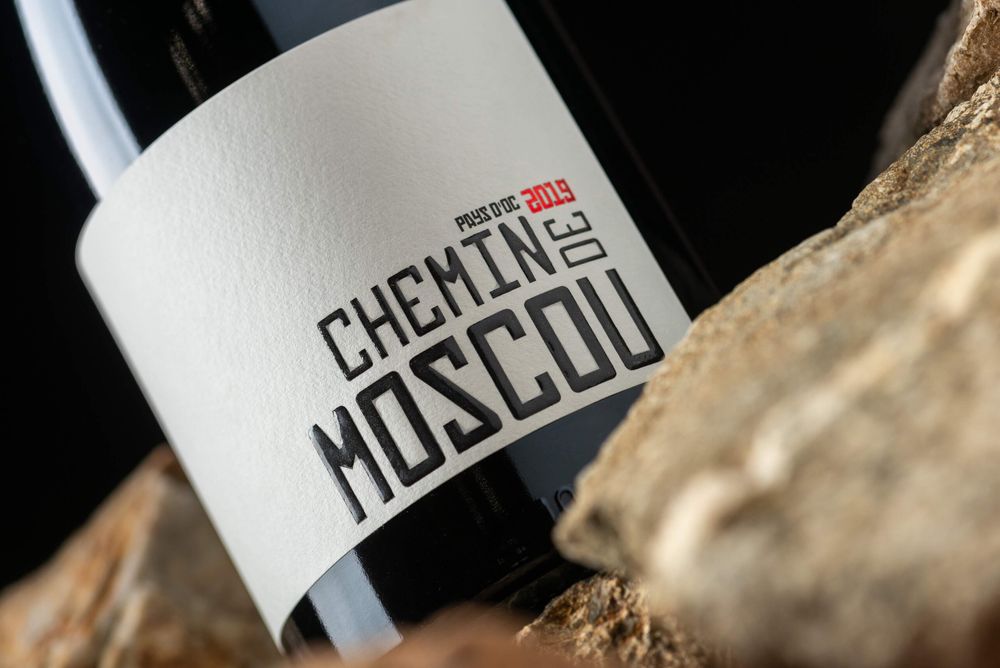
Chemin de Moscou just happens to be the name of the street that the winery is on..
Domaine Gayda might now be in the very welcome position of having so many French restaurants relying on having Chemin de Moscou on their lists, but it has taken 18 years of hard work, and consistently producing the right quality of wine for that to happen.
Maintaining that level is the hardest challenge of any producer, he adds. “You also need to have the utmost integrity and be prepared to never compromise for a moment. That’s how you build a brand.”
It would be so easy, he says, to make changes along the way to help add more volume to meet growing demand for the brand, but you have to remain true to your ethics and not put anything “inferior” in the bottle. It also means putting pressure on your own supply chain to make sure that everyone in it keeps to those high standards.
It’s why major brands, across all grocery sectors, have done so well during the pandemic as consumers have looked to go back to the brands and product they trust, that can give them the reassurance they are looking for.
“We have never had as good a year as the last 12 months and that is down to the strength of the brands we now have. We have also been able to sell more of our higher priced brands as well,” he explains.
Consistency in production
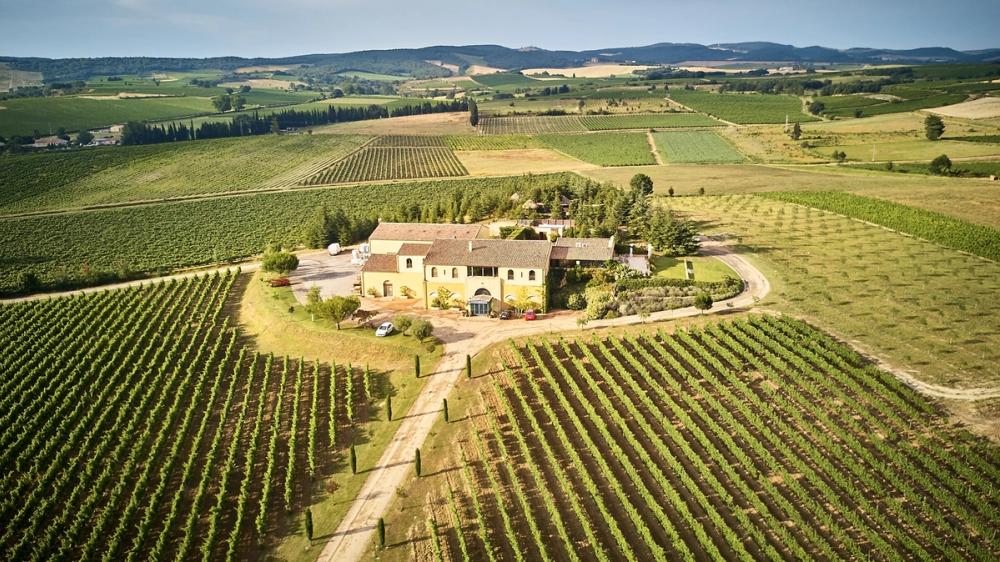
Tim Ford and his team have deliberately built Domaine Gayda on the back of sourcing and having vineyards in different regions of the Languedoc so that it can better guarantee supply and guard against the weather
If you are gong to deliver a consistent product year in, year out you also have to guarantee your supply, says Ford, which is increasingly difficult with the huge inconsistencies there are with the weather, that has seen so much of France’s wine production wiped out this year.
It’s why, right from the beginning Domaine Gayda, has worked hard to build up the vineyards it owns and the growers it works with across four separate areas of the Languedoc Roussillon. Not only do each provide their own unique combination of soils, terroir, climate conditions and grape varieties to allow Domaine Gayda to produce the wide range of wines it has, they also provide the protection to cover for each other in case one is hit by severe weather. Ensuring the overall production is not adversely effected.
The latest vintage is a case in point. Whilst one of its areas of Syrah was hit badly by frost losing half its production, it only meant a 10% shortfall in Syrah overall, which it has been able to cope with by buying in more grapes from its suppliers and tweaking blends.
“That has been the key for us. To have as much diversity as you can with your soil types but also the growers you work with. Our vineyards stretch from La Livinière in the Minervois to the southern tip of the Roussillon , all with different altitudes, proximity to the sea, aspects and soil types, all of which reduces our exposure to climatic risks, but is part of our brand building focus.”
A brand strategy that is based on producing wines under France’s IGP regulations that allow Domaine Gayda to create blends, by bringing together parcels of wine from different areas, rather than be restricted to only using grapes from one appellation.
“IGP is key to our business model. We can bring in grapes from different terroirs and blend them all together at our central winery,” he says.
Again this is where the South African influence comes in, a winemaking country that celebrates the skills needed to be a good blender. “We have learnt a lot from the South African way,” says Ford. “We are not scared to blend and are certainly not so proud that we would not buy grapes from a neighbour if we felt they were better than ours!”
Blending wine also allows you to introduce wines at different price points and make sure “you have a range of prices and styles to offer”.
That said the last year has been one of the most “challenging” the Domaine Gayda team has faced. With the Languedoc now in big demand from producers all over the country looking to buy Chardonnay, Sauvignon Blanc and Chenin Blanc, in particular, to make up for huge shortages elsewhere. That coupled with increases by as much as 30% in dry material costs (glass, labels, packaging) will put a big pressure on market prices.
If final retail prices have to go up then it’s the strength of your brand that will be key in determining whether your consumers will be willing to pay it, he adds.
Looking ahead
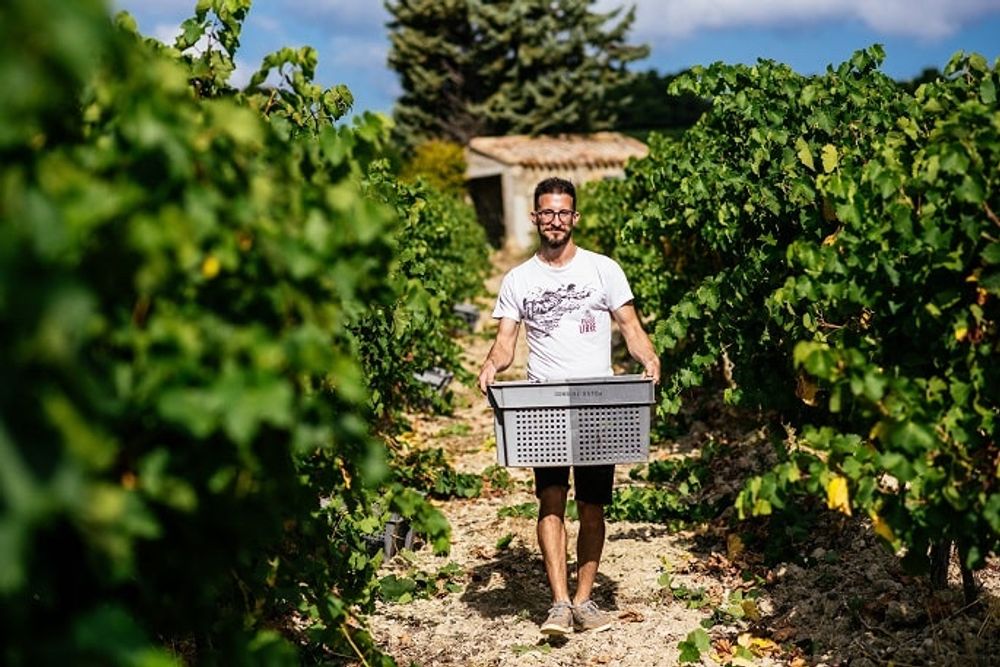
Winemaker Vincent Chansault has experience of working with brands and wines in South Africa
Domaine Gayda’s future brand strategy is very much a case of more of the same. Ford explains: “We want to stick to our core values of integrity, value and service. We don’t want to veer away from that.”
Which means it is also not chasing volumes, listings and clocking up countries around the world where you sell and trade wine as though you are on an Elton John world tour.
“We don’t want to be selling wines under different labels using the same juice that other producers do. We are not that kind of winery. It’s really important to us that all our brands have a clear direct link to us as Domaine Gayda. It’s why the brands might have different labels and designs, but you can tell they are all from the same stable. There are common themes that link them together.”
Like how the brand’s name is usually in the right hand bottom corner of the label. The Gayda logo is prominent on them all. It’s why it has always worked with the same South African design agency.
“That’s been key,” says Ford. “They get who we are and what we do. The wine’s label is so important. It is the opportunity you have to get someone to pick it up and try it. An attractive, intriguing, and eye-catching label is essential. You then hope the quality of the wine will bring them back to buy for a second time.”
He says when they first started out they would gauge opinion from as many people as possible about what they thought of a potential wine label. But now they have stripped that decision making process down to himself, Vincent Chansault, the winemaker and David Chardron, the commercial manager.
“If you design by committee you get 20 different opinions. The more people you ask the more you dilute the design, round off the edges and turn a square into a circle. If you try to please everyone .you will end up pleasing no one! If some people don’t hate a label, no one will love it! “
Crucially, he sums up their branding approach by calling it “product-led not marketing-led”. They don’t sit around and come up with a clever name for a brand and then go out and find the right wine for it. No. Everything is driven by what sort of wines they want to make and then developing brands that fit into that.
Brand Power
Having an overall brand strategy is one thing, here we look at how Domaine Gayda translates that to create different brands, each with their own unique story and rationale behind it.
Chemin de Moscou

First introduced: 2003
Style: Blend of Syrah (around 65%) Grenache (30%), Cinsault (5-7%)
Classification: IGP Pays d’Oc
Price point: Around €22
First things first… what is a wine producer in the middle of the Langudoc doing with a name about Russia? Well, simple. The road up to the winery is called “Chemin de Moscou”. No more mystery than that.
Chemin de Moscou has been made from the same three grape varieties – Syrah, Grenache and Cinsault – from its first vintage in 2003 and is the brand that has made Domaine Gayda’s name both in France and in its key export markets. The wine that defines Domaine Gayda. Here the Syrah is the star of the show and the wine is matured 20 months in oak followed by a rigorous barrel selection.
Ford says they have used Mark Kent’s advice to think of brand names that have integrity and are as authentic as possible and you can’t get more real than the road where the winery is based. “If you tell the truth and have got integrity then you can’t go wrong,” says Ford. “You don’t need a crib sheet to tell you what the wine is about. Everyone can tell the same story. All our brands are built on the same principle.”
Chemin de Moscou also has some “intrigue” about it that consumers seem to like, says Ford. “It makes people ask questions.”
Figure LibreFirst introduced: 2005
Style: Figure Libre Cabernet Franc and Figure Libre Chenin Blanc and Figure Libre Freestyle (red and white blends)
Classification: IGP Pays d’Oc
Price point: Around £10.99 – £17.99 depending on the blend/ bottle.
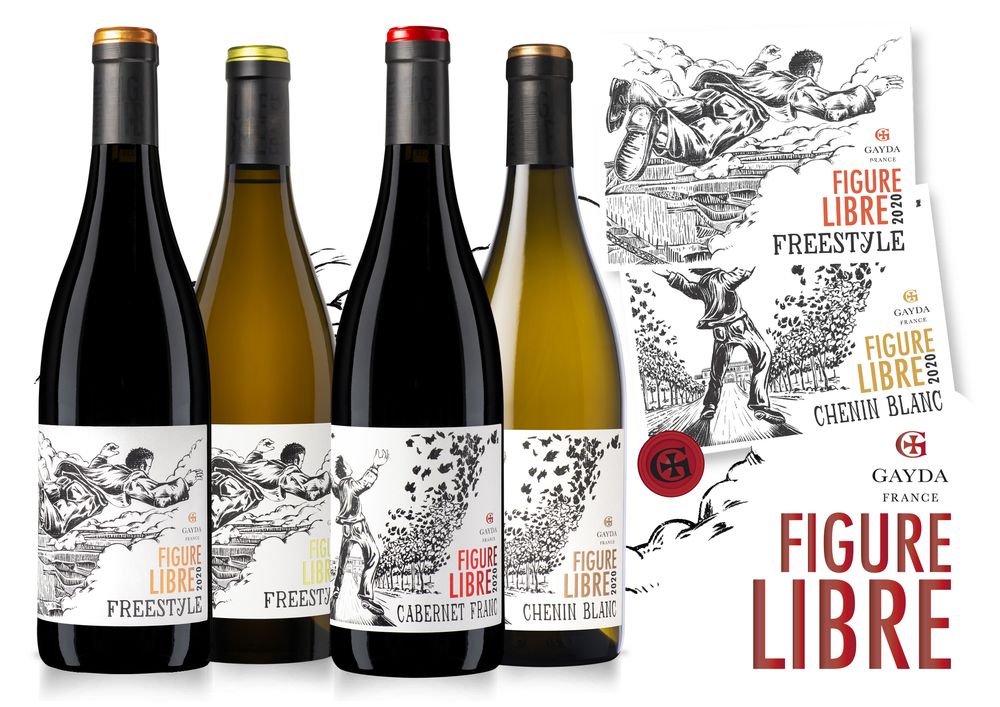
Figure Libre has also been part of Domaine Gayda since its inception with its first vintage in 2005. It has also been organic from day one with Figure Libre demonstrating the diversity and freedom that Domaine Gayda has to produce and blend grapes from across the Languedoc Roussillon. Hence the flying man on the label and name of one of the wines in the range – Freestyle.
It is also where Ford and his team can pick out the grape varieties they believe are best suited to its local areas and largely sandstone terroir. Which has meant two single variety wines: Cabernet Franc; and Chenin Blanc. Both of which are otherwise rarely seen in the region, but are also a nod to the Loire Valley, home of winemaker Vincent Chansault. Then there is Figure Libre Freestyle that is the best of the blended red and white varieties that Ford and his team can find every year.
“We have no restraints with this wine. No safety net that an appellation wine gives you. We are freestyling and can do what we like with it,” he says. “With Freestyle we can really express the different terroirs in the Languedoc.”
The current Freestyle Rouge is 55% Syrah, 30% Grenache Noir, 10% Mourvèdre and 5% Carignan. The Freestyle Blanc is 50% Grenache Blanc et Gris, 25% Macabeo, 15% Marsanne, 10% Roussanne. As Domaine Gayda has grown so has the number of its own vineyards , it’s grower partners and the grape varieties they work with resulting in the exciting range of wines it produces.
“It also works well for our partner growers as they may not want to make the final wine themselves, but they are pleased to partner with us. We have some partner growers who we have worked with for over 18 years. It’s like they are part of Domaine Gayda. Having a wide network of growers in different areas and terroirs also means we can get through bad harvests like we have just been through.”
It is also an important wine for Domaine Gayda to be able to demonstrate its organic credentials.
En Passant
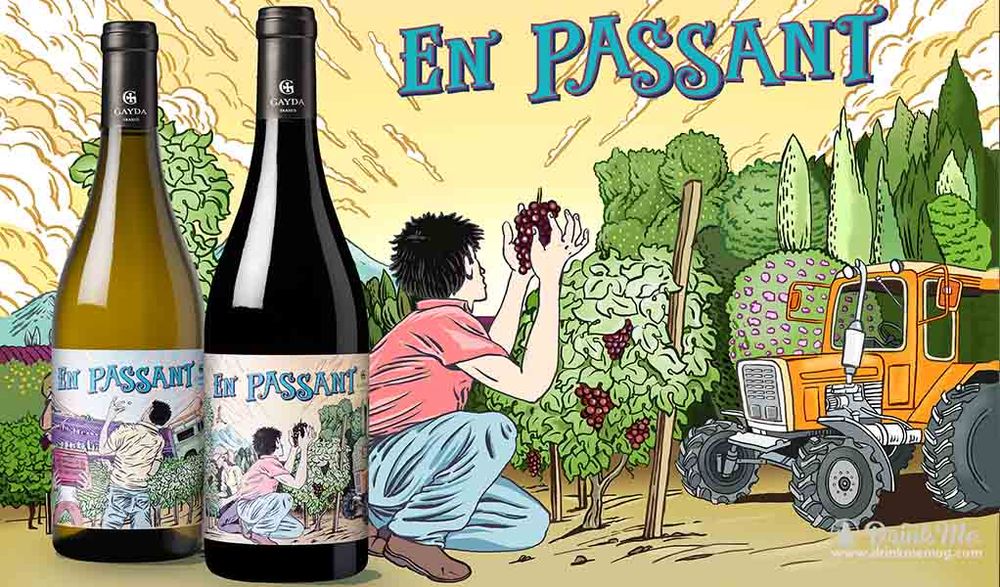
First introduced: 2014
Style: Red and white using grapes that are converting over to organic
Classification: IGP Pays d’Oc
Price point: £11.99
En Passant lives up to its name for this is a brand made up of grapes that are “in passing” on their way to becoming organic. It both allows Domaine Gayda to increase the number of its vines that are organic whilst developing a successful brand at the same time.
The state of flux is also reflected in the styles of wine in the En Passant range that change vintage to vintage, with different labels and designs introduced every year that tell the story of that particular wine with a storyboard design. One year the blend might be Syrah and Grenache, the next Macabeo and Muscat.
Ford particularly likes this brand concept as it “reflects what we do as a winery”. Forever changing and adapting, buying and investing in new vines and putting them into organic conversion. It taps into its “creativity and inventiveness”.
It’s also inspired by The Passenger, the classic pop-rock anthem by Iggy Pop, with a “restless character” that is “expressed through a red and a white wine that are made from a different vineyard, terroir and grape variety every vintage”.
Collection
Style: Single varietal range including Syrah, Grenache, Viognier and Chardonnay.
Classification: Pays d’Oc
Price point: £9.99
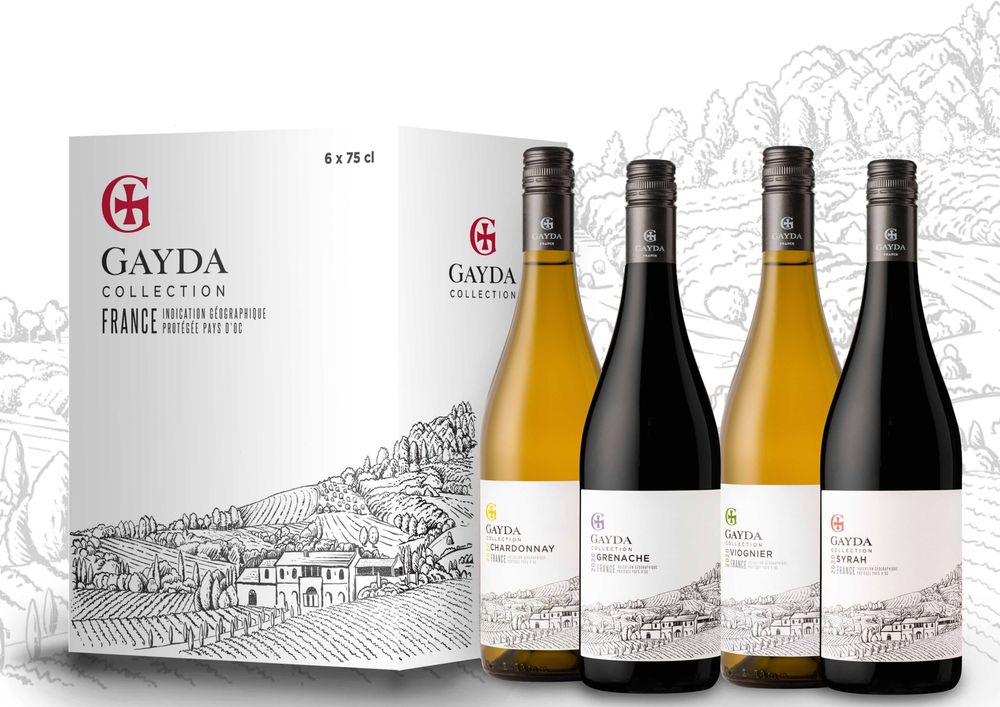
The Collection range is Domaine Gayda’s single varietal range which is again looking to reflect and showcase the diversity of the region and how well certain varieties perform there. “We want the Collection wines to be a true representation of what Chardonnay, Viognier, Syrah and Grenache can do here,” says Ford who is looking forward to introducing a Pinot Noir to the range next year.
Ford admits it may have made a mistake with what he calls the “neutral” label and that It might do better with a more personality-driven design. “We can probably be a bit more risky, make it more memorable and have more of the Gayda philosophy,” he says. “But it’s a balancing act as it might put some people off. But then if no-one hates it, nobody will love it either. We want to create a bit of a love hate relationships with our labels.”
La Minuette
First introduced: 2017
Style: Mourvedre, Syrah, Grenache and Cinsault.
Classification: IGP Pays d’Oc
Price point: Around £11.99.
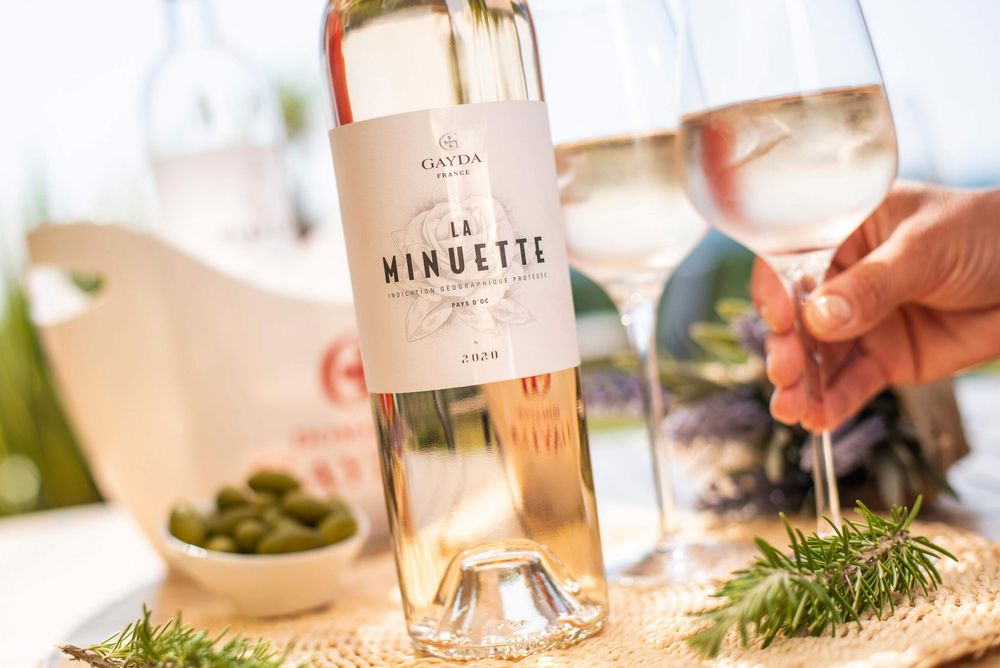
This blended rosé comes from the limestone terroir of the land Domaine Gayda owns in La Livinière that helps give it great freshness and notes of grapefruit. This is a serious, premium style of rosé that includes many of Domaine Gayda’s top classification grapes, including Mourvedre, Syrah, Grenache and Cinsault.
It also harks back to Ford’s days in Kenya running his flower business with the pale colour and floral bouquet sharing the same characteristics as the Minuette variety of rose planted in Kenya by Tim Ford back in 1982. Hence the name.
Villa Mon Rêve

First introduced: 2012
Style: Syrah dominant
Classification: AOP La Livinière
Price point: €48
A brand with another great back story. The Villa Mon Rêve is the name of a little stone cottage situated on Domaine Gayda’s vineyards in La Livinière. The cottage was built by the previous owner for what he thought was his dying wife so that they could spend valuable last moments together in the heart of the vineyard. But thankfully his wife made a miraculous recovery and hence the cottage became knowns as the “Villa Mon Rêve” – the house of my dream.
Ford hopes they have done justice to such a lovely story by basing the wine on Syrah (10% Grenache) and have looked to create a wine with great intensity on the nose and palate. “It took us 10 years to find the right vineyards for this wine,” he says.
The wine is aged in large foudres and hopes to compete as a high end Syrah – it is usually only available on allocation. A wine that Jancis Robinson MW shows “Tim Ford’s team have a finger on the pulse…the epitome of Minervois brilliance: curving rich, dark and creamy fruit into exquisitely elegant arcs of flavour and structure.”
Whatever the brand, its overall approach and strategy to introducing new wines has served Domaine Gayda very well for almost the last 20 years.
- To find out more about Domaine Gayda go to its website here.
- Domaine Gayda is a producer partner of The Buyer.




